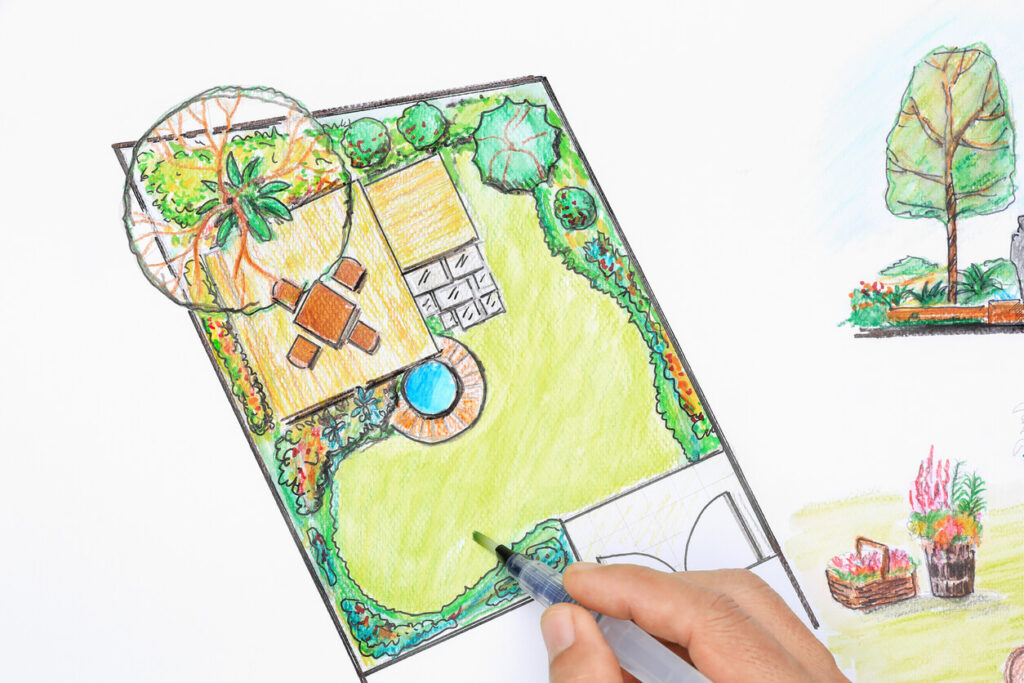Squash plants are a showpiece in any vegetable garden. Squash plants are a prolific fruit producer and one of the best aspects of gardening squash is the abundance of varieties!
You can find squash in many sizes, shapes, and flavors. However, they take up lots of space. Consider growing squash in containers. This can allow gardeners to produce abundant fruit in a limited space. Pots and containers are great for growing squash because you can control the soil quality and keep pests away from plants. These are some tips to help you grow squash in pots and containers.
Soil composition and pH for growing squash in containers
Amend your garden soil with rich organic matter and well-decomposed compost. Squash plants thrive in well-draining, nutrient-rich soil. Between 6.5 and 7 is the ideal pH range for these plants.
Squash Containers: Light and Temperature
Place your pots and squash containers in an area that gets full sun.
- For optimal growth, choose a spot in your yard with sun exposure that receives at least 6-8 hours per day.
- Squash plants thrive in warm temperatures, ideal in the mid-70s and higher.
- Seeds must be heated to 60 degrees Fahrenheit before they can be planted.
- Plants can suffer stunted or delayed growth if they are exposed to too cold temperatures.
How to Grow Squash in Pots
If you take care of your squash properly, they can be successfully grown in pots and containers.
- Choose a container with drainage holes.
- You should ensure that your container or pot is large enough to hold the potting mix and water.
- A trellis can be used to grow vertically vining plants.
- For a compacter habit, plant a bush variety.
- If you have enough space, allow the plants to grow out of the container.
- Containers & pots are a better way to control the soil quality in your garden. Your plants and seeds will also stay warmer in the spring than if they were planted in the ground.
Growing squash seeds in containers
Squash roots don’t like to be transplanted, so it is better to sow seeds directly in the pot or container. After the soil has warmed up, plant seeds mid-spring. This is approximately two weeks before frost. You can get your seeds started indoors by using biodegradable containers, which you can use for three to four weeks before the last frost. Biodegradable pots allow you to place the entire pot directly in the soil, so the roots will not be damaged.
Fertilizing Squash in Pots
Squash plants get their nutrients from the soil they are growing in, so fertilization can be applied approximately six weeks after seeds have been planted. If you are growing squash in pots and containers, make sure to amend the soil with compost or worm castings. This will help promote fruit production and prevent diseases such as blossom rot.
How to Water Squash Plants
One inch of water should be given to squash plants each week. You must ensure that your plants are hydrated, especially during the budding and fruiting stages. When growing squash in pots and containers, you can add 2-3 inches of organic mulch to the base of your plants.
- To prevent fungal disease, water the soil and not the plant.
- Water in the morning so the sun can dry the leaves and the large plants have time to hydrate before it gets too hot.
Pests & Diseases of Common Squash Plants
Although growing squash in pots and containers is easy, you might need to fight some diseases or pests along the way. Organically controlling pests and disease can be avoided by making sure your soil is rich and well-watered. It is important to watch your plants for signs of disease or pests, and take immediate action if necessary.
- Cucumber Beetles and Squash Vine Borers are both serious nemeses for squash and zucchini plants. You should be on the lookout for visible insects and damage to vines. It can cause the death of your plants if they burrow into your vines.
- Blossom Rot – Blossom Rot can be prevented by making sure that your soil is calcium rich. It is possible to test the soil and make adjustments if necessary.
- Powdery Mildew – If not treated quickly, powdery mildew can quickly spread and decimate a garden. Proper spacing can prevent it from spreading quickly and can be stopped by regular watering in the morning to keep leaves from becoming too saturated.
Squash Containers: Recommended Varieties
There are many varieties of squash plants that can be planted. These include vibrant colors, patterns, and a wide variety of shapes and sizes. There are also space-saving bush varieties as well as meandering vines.
These varieties are easy to grow and can be used in your garden.
- ‘Summer Squash-Golden Zebra Hybrid’
- ‘Summer Squash-Gourmet Gold’
- ‘Scalloped Patty-Pan Squash’
- ‘Winter Squash-Spaghetti’
- ‘Summer Squash-Golden Goose Hybrid’
- ‘Winter Squash-Delicata’
- ‘Winter Squash-Butternut’
How to grow squash in pots and containers
To produce a strong yield, squash plants need to be pollinated. To produce squash plants, both male and female flowers must be tended to by beneficial insects like bees.
To keep up with the fast-growing crop, make sure to check your garden every day. Young fruits should be at least 6-8 inches in length to get the best taste and tender vegetables. These tips will help you to have a surplus that you can store, use, and share with your friends!





